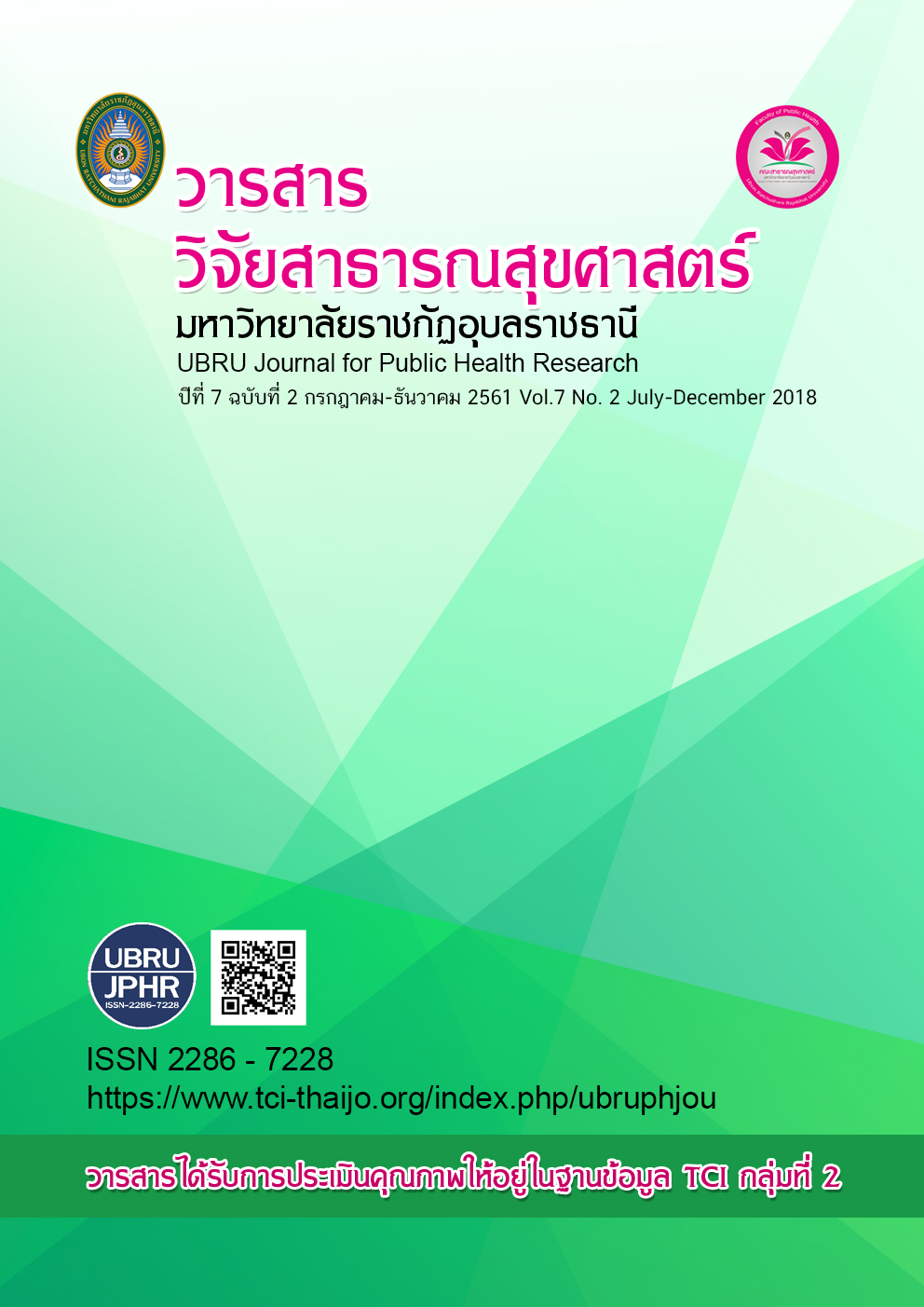ความกังวลของพฤติกรรมการมีเพศสัมพันธ์ทางช่องปากกับการติดเชื้อ ฮิวแมนปาปิโลมาไวรัสในผู้ป่วยโรคมะเร็งช่องปาก
คำสำคัญ:
โรคมะเร็งช่องปาก, พฤติกรรมการมีเพศสัมพันธ์ทางช่องปาก, การติดเชื้อฮิวแมนปาปิโลมาไวรัสบทคัดย่อ
โรคมะเร็งในช่องปากมีสาเหตุมาจากหลายปัจจัย โดยเฉพาะปัจจัยทางด้านพฤติกรรมสุขภาพ ได้แก่ การเคี้ยวหมาก การสูบบุหรี่ การดื่มเครื่องดื่มแอลกอฮอล์ และพฤติกรรมที่เกี่ยวข้องกับการได้รับเชื้อ Human papillomavirus (พฤติกรรมการมีเพศสัมพันธ์ทางช่องปาก) ซึ่งจากงานวิจัยต่างๆ ที่ได้ทำการศึกษาเกี่ยวกับพฤติกรรมดังกล่าวข้างต้นล้วนมีข้อสรุปเป็นไปในแนวทางเดียวกันและมีความสอดคล้องกันในส่วนของข้อเท็จจริงที่เกี่ยวข้องกับปัจจัยที่มีความสัมพันธ์ต่อการเกิดโรคมะเร็งช่องปาก แต่ในส่วนของประเด็นการมีเพศสัมพันธ์ทางช่องปากนั้นยังคงต้องการองค์ความรู้หรือหลักฐานเพิ่มเติมในรายละเอียดเชิงลึกของพฤติกรรมดังกล่าวว่าเกี่ยวข้องกับประเด็นทางด้านปัจเจกบุคคลในส่วนใดได้บ้างถึงได้ทำให้กลุ่มคนเหล่านั้นได้แสดงพฤติกรรมการมีเพศสัมพันธ์ทางช่องปากออกมา ซึ่งอาจจะต้องอาศัยข้อมูลการศึกษาเพิ่มเติมรวมถึงการออกแบบในส่วนของแบบสัมภาษณ์/แบบสอบถามในเชิงลึกให้มีความน่าเชื่อถือและความเที่ยงตรงมากยิ่งขึ้นเพื่อป้องกันปัจจัยก่อกวนอื่นๆ ที่ไม่เกี่ยวข้องกับการศึกษาออกไป อันจะส่งผลทำให้ผลการศึกษาที่ได้ใกล้เคียงกับความเป็นจริงได้มากที่สุด อันจะก่อให้เกิดประโยชน์ในการหาแนวทางการป้องกันโรคมะเร็งในช่องปากที่มีความเกี่ยวข้องกับพฤติกรรมการมีเพศสัมพันธ์ทางช่องปากต่อไป
เอกสารอ้างอิง
Attasara, P., Buasom, R. (2010). Hospital-based cancer registries, Thailand 2009. Bangkok: National cancer institute department of medical services ministry of public health.
Bhatla, N., Lal, N., Bao, Y.P. (2008). A meta-analysis of human papillomavirus type-distribution in women from South Asia: implications for vaccination. Vaccine, 26, 2811-7.
D’Souza, G., Kreimer, A.R., Viscidi, R. (2007). Case–control study of human papillomavirus and oropharyngeal cancer. N Engl J Med, 356, 1944-56.
Gillison, M.L., Chaturvedi, A.K., Anderson, W.F. (2015). Epidemiology of human papillomavirus–positive head and neck squamous cell carcinoma. J Clin Oncol, 33, 3235–42.
IARC Globocan. (2012). Estimated new cancer cases and deaths worldwide for leading cancer sites. France: WHO.
Loyha, K., Vatanasapt, P., Promthet, S., Parkin, D.M. (2012). Risk Factors for Oral Cancer in Northeast Thailand. Asian Pacific Journal of Cancer Prevention, 13, 5087-90.
Rosenquist, K., Wennerberg, J., Schildt, E.B., Bladstrom, A., Goran Hansson B. and Andersson, G. (2005). Oral status, oral infections and some lifestyle factors as risk factors for oral and oropharyngeal squamous cell carcinoma: a population based case-control study in southern Sweden. Acta Otolaryngol, 125, 1327-36.
Stewart, B.W, Wild, C.P. (2014). World Cancer Report [online]. from: http://publications.iarc.fr/Non-Series-Publications/World-Cancer-Reports/World-CancerReport-2014. [Available 8 October 2018]
ดาวน์โหลด
เผยแพร่แล้ว
รูปแบบการอ้างอิง
ฉบับ
ประเภทบทความ
สัญญาอนุญาต
เนื้อหาและข้อมูลในบทความที่ลงตีพิมพ์ในวารสารวารสารวิจัยสาธารณสุขศาสตร์ มหาวิทยาลัยราชภัฏอุบลราชธานี ถือเป็นข้อคิดเห็นและความรับผิดชอบของผู้เขียนบทความโดยตรงซึ่งกองบรรณาธิการวารสาร ไม่จำเป็นต้องเห็นด้วย หรือร่วมรับผิดชอบใดๆ
บทความ ข้อมูล เนื้อหา รูปภาพ ฯลฯ ที่ได้รับการตีพิมพ์ในวารสารนี้ ถือเป็นลิขสิทธิ์ของวารสารฯ หากบุคคลหรือหน่วยงานใดต้องการนำทั้งหมดหรือส่วนหนึ่งส่วนใดไปเผยแพร่ต่อหรือเพื่อกระทำการใดๆ จะต้องได้รับอนุญาตเป็นลายลักอักษรณ์จากบรรณาธิการวารสารนี้ก่อนเท่านั้น


